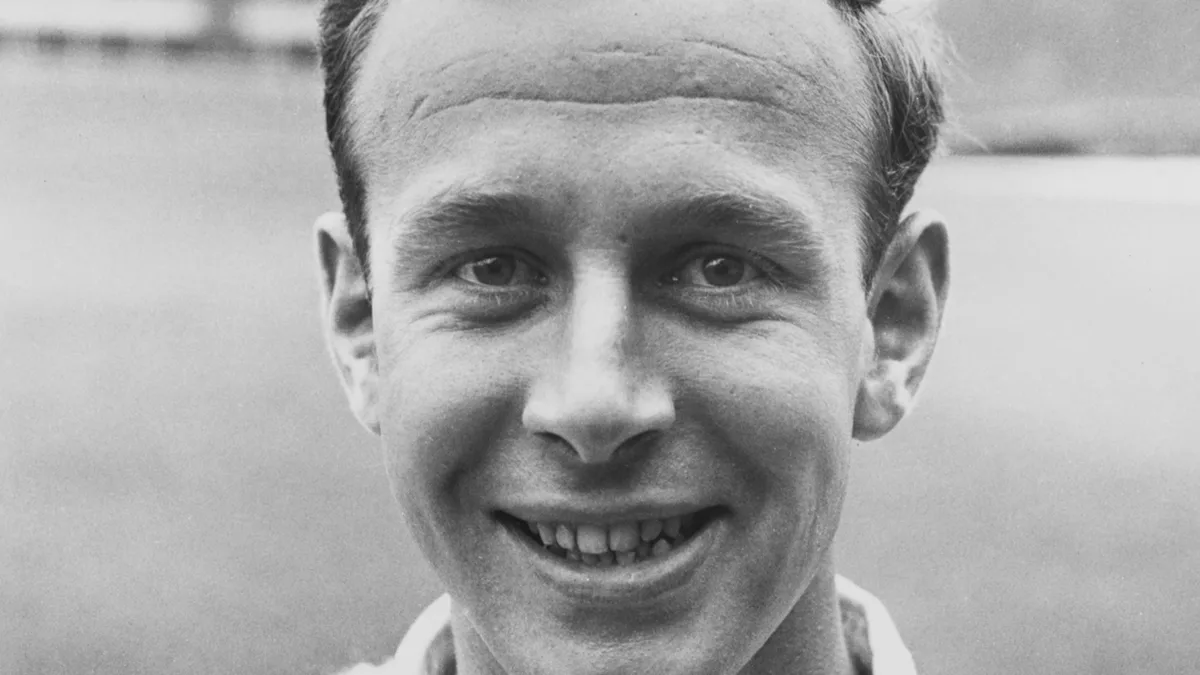
In an extract from the latest issue of Wisden Cricket Monthly, available to pre-order now, Phil Walker celebrates the great Derek Underwood.
Pre-order issue 77 of Wisden Cricket Monthly now
The news broke around Monday lunchtime on the last day of the Championship’s second round. At The Oval, where I was, the union flag, fluttering dementedly in the April gales, was lowered to half-mast above the pavilion. Same as at Chelmsford, where Kent were scrapping to avoid defeat.
Soon enough the messages started coming through, one from a former colleague, reminding me of the time he interviewed him in his living room, supping Darjeeling from the Underwoods’ best china and leafing through the old family albums. Mournful official statements began popping up in inboxes. Grainy clips of lightness and sparkle started appearing on media sites. Everywhere, the sense of a community of souls, sighing and pausing and taking a breath. England’s greatest slow-not-slow spinner-cum-cutter bowler – our schoolteacher-shirted, eyes-a-sparklin’, Chaplin-footed ballet dancer of a left-armer – had died. Deadly, gone for 78.
At that moment it felt right and good to be there, at that ground, where final chapters are baked into the soil. Minds inevitably turned to Underwood’s match, the final Ashes Test of 1968, and one of the game’s great cinematic moments. Make a film of it and call it The Last Hour.
Hubristic? Perhaps. But this was more than just another game, and much more than some last-session finale after a downpour. Think of Basil D’Oliveira, England’s adopted South African, recalled to the side, strumming 158 and inadvertently changing the world. Think of the homespun post-war symbolism of local spectators, at the behest of dear old M.C. Cowdrey, dashing home for rags and mops to help soak up the puddles on the rain-lashed outfield.
And think of a 22-year-old from Bromley, jauntily unplayable, driving it harder and harder into the pitch as the minutes ticked by. Derek Underwood had played seven Tests by that stage for a single five-for against Pakistan, but that final evening, in the insulting sunshine, given an hour or so to claim five more to halve the Ashes, he had the time of his life. The final wicket fell with six minutes left. The boy finished up with seven for spit. The optimism of the will, indeed.
There were others. A 10-for at Leeds in 1975, giving up 82 runs from 52 overs, suffocating the Chappell brothers and Dougie Walters. A first-innings seven-for at Adelaide in the midst of a bruising series in which, as perpetual nightwatchman, he always seemed to be fending Jeff Thomson bumpers off his unprotected skull, stoically shotless and as brave as they got. And that was just Australia. In all he took 297 Test wickets.
Duty was his thing. It was no easy call, persuading Deadly to go over the wicket, or to bowl a little slower on certain pitches. Mike Brearley, who captained him in Test cricket, found him to be a reluctant tinkerer, observing that for such a great bowler, Underwood was often uncertain about deviating too far from the orthodox. Only once, on the eve of the Old Trafford Ashes Test in 1977, did Brearley successfully twist Underwood’s arm by showing him hand-drawn diagrams of field placings that the England skipper insisted would be in play should he consider changing his angle of attack. By game time, after some convincing, Deadly was on board. He took 6-66, the old devil.
Run a line along the top echelon of English cricketers from Underwood’s era and you’ll find only a handful eluding any of the various categories marked confrontational, cantankerous, detached, challenging, aloof… or any other euphemism for ‘tricky bastard’. Underwood fell into none of those. A more popular pilgrim you could not wish to find. It made him a natural choice for MCC president, and for the same role at Kent, his first and truest love, the club for whom he played over 900 times, taking 2,523 wickets.
Cricket is about bonds forged, allegiances made and held onto. In 2011, two years after Underwood’s induction into the ICC’s Hall of Fame, the Annexe Stand at Kent’s St Lawrence ground was renamed the Underwood & Knott Stand in recognition of one of the English game’s great quintessential partnerships. Deadly and Knotty were made for each other.
It’s fun to ask not so much if Derek Underwood would have been successful in the modern era – in this time of DRS and trigger-finger umpires, daredevil shotmaking and white-ball riches – as to wonder just how gigantic he would have been. Think of it. That style. That zip and fizz. He was so ahead of his time that the game took four decades to catch up. It was almost as if, like all the true greats, that boy, bounding up to the sawdust-caked crease on a wet one in London – in perfect concord with life’s design – must have known the game’s secret truths all along.







